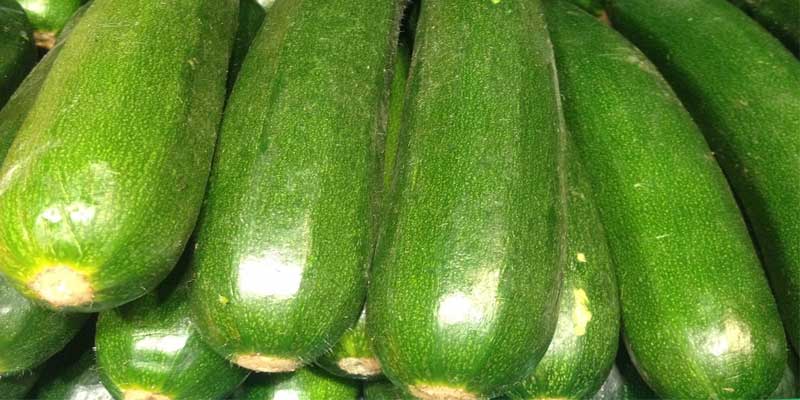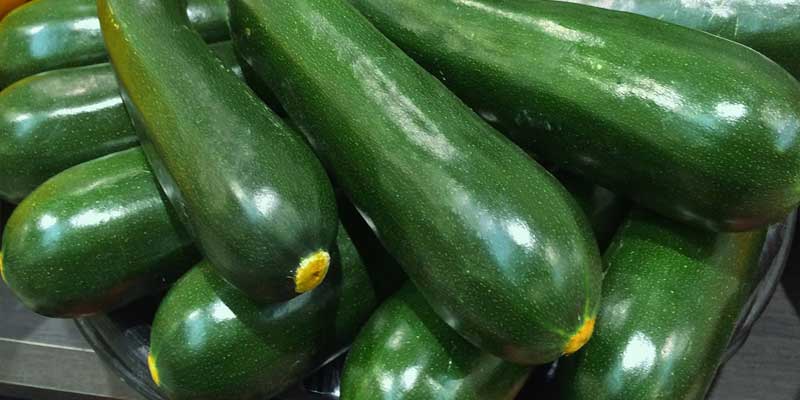With its vibrant green color and mild flavor, zucchini – a versatile vegetable – finds appreciation in various cuisines worldwide. People commonly incorporate it into salads, stir-fries, and soups; surprisingly even baked goods feature this adaptable ingredient. However, in terms of preparing zucchini, one question frequently emerges: is the consumption of the skin advisable? Some individuals may favor peeling it; however, proponents argue that retaining the skin yields enhanced nutritional value and texture.
We should intensify our exploration of this culinary controversy—scrutinizing both advantages and potential caveats associated with consuming zucchini skin, which is an intriguing aspect of gastronomy indeed.
Can You Eat Zucchini Skin?
You can indeed consume the skin of a zucchini; it is completely edible. Furthermore, valuable nutrients such as dietary fiber, vitamins, and minerals are present in this part of the vegetable. By leaving its skin intact, not only does one boost the nutritional value of their dish but they also introduce an appealing texture and flavor to dishes.
Washing the zucchini thoroughly before consumption, to eliminate any dirt, pesticides, or bacteria on its skin’s surface is indeed essential.
Individuals who have specific food allergies or sensitivities should exercise caution when consuming not only zucchini but also its skin. Incorporating zucchini skin into your diet can promote a healthy and balanced eating pattern overall.
Texture and Flavor Considerations
Zucchini skin, in addition to its nutritional value: contributes texture and flavor in dishes. When cooked, this skin introduces a slight crunch; furthermore, it infuses the dish with an understated earthy taste. The resultant texture contrast amplifies the overall eating experience—and renders each serving more intriguing and pleasurable.
Moreover, retaining the skin during cooking aids in moisture retention; thus, it prevents excessive softening or mushiness of the zucchini. This proves especially advantageous in grilling or roasting processes: The protective outer layer—by sealing off juices and preserving their shape—maintains an optimal texture throughout the preparation.
Potential Concerns and Precautions
Zucchini skin remains largely consumable without harm; however, certain factors warrant attention. Primarily—before ingestion—it becomes crucial to cleanse the zucchini meticulously: this process eradicates potential pollutants such as dirt, pesticides, or bacteria residing on the surface of its peel.
By employing a vegetable brush and applying vigorous scrubbing motions under flowing water—one can effectively eliminate any contaminants thus significantly diminishing the peril associated with foodborne illness.
Individuals with specific food allergies or sensitivities may react negatively to zucchini skin. If you possess a known allergy to cucurbit vegetables like cucumbers or melons, exercising caution while consuming zucchini – especially its skin – is advisable.
Moreover, the thick or tough texture of zucchini skin may not appeal to some individuals in terms of taste and overall experience. In these instances, they might prefer to peel the zucchini before cooking it for a more desired flavor and texture.
Different Methods To Eat Zucchini Skin
Incorporate zucchini skin into your meals in various delicious and creative ways. Enjoy the zucchini skin using these methods:
Raw in Salads
- Thinly slicing or julienning zucchini, including the skin, enhances your preferred salads.
- The refreshing crunch and vibrant color of zucchini skin complement other vegetables and dressings in salads.
Sautéed or Stir-fried
- Slice zucchini into thin rounds or strips, leaving the skin on.
- Heat a skillet over medium heat with olive oil or butter; then, tenderly sauté the zucchini.
- Season with herbs, spices, or a splash of lemon juice for extra flavor.
Grilled
- Cut zucchini lengthwise into strips or rounds, keeping the skin on.
- Brush the zucchini with olive oil; then, season it as per your liking with salt, pepper, and a medley of desired herbs or spices.
- Grill the zucchini over medium heat, flipping it halfway through cooking; continue until you achieve a light char and tenderness.
Roasted
- Cut zucchini into bite-sized pieces, leaving the skin on.
- Toss the zucchini with olive oil, minced garlic, and your favorite seasonings.
- Spread the zucchini in a single layer on a baking sheet; then, roast it in an oven that you’ve preheated. Keep observing until the zucchini caramelizes and turns golden brown.
Stuffed
- Cut the zucchini in half lengthwise; then, with precision—scoop out its seeds: aim to create a boat-like shape.
- Fill the zucchini halves with a mixture of cooked grains, vegetables, and cheese particularly herb-infused variants.
- The stuffed zucchini, once placed in the oven, should be baked until it reaches a state of tenderness; this typically occurs when both the filling is heated through and the zucchini itself becomes soft.
Pickled
- Slice zucchini into thin rounds or spears, leaving the skin on.
- Prepare a pickling solution: combine vinegar, water, sugar preferably raw or unrefined salt; and select spices—mustard seeds for piquancy – peppercorns to add heat—or dill which imparts a distinct herbal note.
- Sterilize the jars, then arrange the zucchini slices within them; finally – pour over these vegetable layers with a generous amount of pickling solution.
- Seal the jars, refrigerate for a few days, then savor the tangy and crunchy pickled zucchini.
Blended in Smoothies or Soups
- Cut zucchini into chunks, leaving the skin on.
- Add the zucchini to smoothies or soups for added nutrition and creaminess.
- Your beverages or pureed dishes benefit from the complementary blend and fiber-rich, antioxidant properties of zucchini skin.
Baked in Casseroles or Gratins
- Slice zucchini into rounds or half-moons, leaving the skin on.
- Layer the zucchini slices in a casserole dish: alternate them with cheese, breadcrumbs, and other ingredients.
- Bake until bubbly and golden brown for a comforting and flavorful dish.
Incorporate zucchini skin into your meals using these methods, not only will you enjoy its nutritional benefits, but also enhance the taste and texture of your dishes. Experiment by trying out diverse recipes; employ various cooking techniques–to unearth your favorite way to savor zucchini skin.
Conclusion
Ultimately, personal preference and individual dietary considerations determine the debate’s conclusion on consuming zucchini skin. Despite its nutrient-rich content that enhances dish texture and flavor, some individuals might opt to remove the zucchini skin out of worry for contaminants or because they do not favor its taste.
Deciding to retain the skin, ensure you thoroughly wash the zucchini and explore incorporating it into diverse recipes for full nutritional benefits. Nevertheless, should you choose to peel off its skin; take comfort in knowing that the delicious flavor of this versatile cooking ingredient remains intact.
Incorporate this nutritious vegetable into your diet, whether you consume zucchini skin or not; it will ultimately support a healthy and balanced eating pattern. Therefore, when preparing zucchini consider exploring the option of including its skin: you may uncover an exciting new facet of flavor and nutrition within your dishes.

Kate has been in the food business for over 20 years. Worked as a cook at several buffets which include Old Country Buffet, Five Star Buffet, and Ichiban Buffet. Now, I’m mostly at home cooking for my family, caring for chickens and ducks, and tending the garden.


